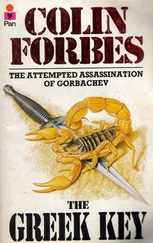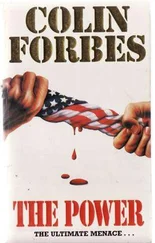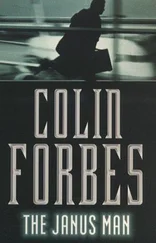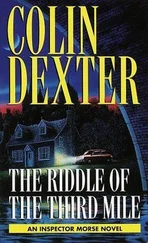Wilson took the point sedately, but caught Colonel Belling’s eye and was hard-put to restrain the amusement which welled suddenly inside him.
‘It’s not quite as easy as that,’ he said, striving to retain his academic pose. ‘I said that Leda was one of an odd binary pair. It’s always been a puzzle how this could be stable—but now we know for sure that Negrav is not large enough to substantially affect the gravitational balance. Rather, it functions as a satellite to the real companion of Leda—which is a small black hole.’
‘A what?’ said Van Noon, sitting down weakly.
‘A black hole,’ said Wilson happily, under the approving eyes of his triumphant mentor. ‘The second component of the binary is a small black hole of roughly Terran mass, which has an event horizon of about one centimetre.’
‘And Negrav is in orbit about this?’
‘A very close elliptical orbit.’
‘How close?’ asked Fritz suspiciously.
‘It actually shaves the surface on its closest approach. Our problem on Negrav isn’t getting an observatory to adhere, it’s how to stop it being eaten by the black hole in grazing orbit—no pun intended. Orthodoxy doesn’t have any good answers. I’d be interested in hearing the unorthodox approach.’
Colonel Belling was still laughing the next morning. When Van Noon received a summons to report to his superior’s office at the Engineering Reserve he sensed it was only so that salt could be rubbed into an already smarting wound. It made a change, however, to find his commanding officer in a congenial mood so early in the morning. This was a situation Van Noon had plans to rectify.
‘Ah, Fritz! Sit down! I’ve to congratulate you. Your reputation for unorthodoxy is unimpaired. Nobody ever gave such an unorthodox reply to a question at a Space Engineering Symposium. I was particularly intrigued by what you told him to do with his black hole.’
‘It was deliberate provocation,’ said Van Noon. ‘A put-up job designed to discredit unorthodox engineering.’
‘Which it did beautifully,’ said Belling happily. ‘I always said I’d show you crackpots up for what you are.’
‘Then you haven’t heard yet?’ asked Fritz carefully.
‘Heard what?’ Belling’s suspicion was palpable.
‘General Nash was in the assembly representing Space Engineering Command.’
‘Of course. What of it?’
‘Well, the Unorthodox Engineers have pulled him out of several holes in the past. I think he saw the chance to return the favour.’
‘What chance?’
‘That building an observatory on Negrav wasn’t entirely a leg-pull. With respects, Colonel, you were so busy looking at the absurdity of it, that you overlooked the possibility there might be a genuine need. It so happens there is a need. The Negrav-Leda complex promises to provide easily-won mineral resources for a large sector of the Rim, avoiding the long hauls from Terra.’
‘Go on!’ said Belling grimly.
‘Well, General Nash got together with the Director of the Space Territories Administration and offered to build the Negrav observatory for him. The Director was delighted, and an inter-Service contract was drawn up on the spot.’
‘And?’ asked Belling. He had the look of a man who knew what the answer must be, but hoped against hope that the truth could not be as bad as he imagined.
‘The contract makes this Engineering Reserve responsible for building the observatory,’ said Fritz, with an evil smile. ‘That means it’ll be your pigeon.’
‘I’ll never forgive you for this, Fritz.’
‘But I did nothing. It was you who had the matter raised.’
‘I still shan’t forgive you. It has all the hallmarks of your devious organization.’
‘And it raises a good question, Colonel. Who’re you going to send to Negrav? An orthodox engineering team —or a bunch of unorthodox crackpots?’
‘I still think it was a heck of a tough way of proving your point,’ said Sergeant Jacko Hine.
Van Noon scowled at his second in command. ‘Not even Colonel Belling believes me, but I had nothing to do with us being sent to Negrav. The construction orders came down from General Nash, and Belling had to recant on his orthodox approach because there wasn’t an orthodox way to do it.’
‘My understanding is that everybody else refused point-blank to go! I suppose it never occurred to you that there might not be an unorthodox way to do it, either?’
‘The thought did strike me, but I dismissed it as unlikely. Just how the heck we’re going to do it, I don’t have a clue at the moment. But at least it puts us marginally up on Belling’s approach.’
‘How do you figure that?’ asked Jacko dubiously.
‘Belling’s certain it can’t be done. I’m certain that it can. So all we have to figure out is how. That simplifies the problem no end.’
‘Ri-i-ight,’ said Jacko Hine slowly. ‘You’d better clue me up on black holes. If we’re to tangle with one, I’d like to know something of the enemy.’
‘The classical theory’s that of the collapse of a burned-out star. Once a star’s used up its nuclear fuel the radiation pressures holding it up fall right away. It begins to contract under its own gravity. The size of the star controls how far the collapse can go—the larger the star, the smaller it will become. If the start is large enough then nothing can prevent it continuing indefinitely. The whole thing collapses down to an infinitely small point called a singularity. Around the singularity is a region of space where the gravitational field is so strong that not even light can escape from it—this is what’s known as the “event horizon”.’
‘Since nothing that happens beyond that can ever be seen.’
‘Sure. Light—or anything else for that matter—can be drawn into a black hole by the intense gravity, but nothing, nothing at all, can ever get out again. It’s a one-way hole in space.’
‘What happens to the things it swallows?’ asked Jacko uneasily.
Ripped apart to atoms, and then those are ripped apart until all that’s left is randomised radiation. As to what lies on the far side—there are plenty of theories, but nobody actually knows.’
‘So how big is it?’
‘We can never know the radius of the singularity, but the size of the event horizon is determined by the mass of the black hole. Sol is too small to make a black hole, but if it could, the event horizon would be about three kilometres.’
‘But Wilson was speaking of one about a centimetre in size.’
‘There’s another possible way by which black holes could have been formed. In the big bang which kicked off the expansion of the universe. Theory has it that baby black holes of a mass around ten to the minus five grammes and ten to the minus thirty-three centimetres in diameter could have been formed then and would have been wandering space ever since, consuming whatever mass they chanced to find in their travels. It’s entirely possible for one of these mini black holes to be able to eat an entire planet and still not finish up much larger than a marble. It’s likely that’s what we’re dealing with at Negrav.’
‘It gives me a very curious feeling,’ said Jacko, to think of a little black hole which could eat a planet. The more I hear of this expedition, the less I begin to like it. As I said just now, I think you’ve chosen a heck of a tough way to prove your point.’
The great hyper-ship of the STA had carried them out to Chronos, on the Rim. From there another Navy vessel had taken them on to the STA base on New Australia. Here, a smaller vessel took them on the three week sub-light trip to Springer 218G, with its curious binary satellites and the asteroid Negrav. Two days from arrival, Van Noon called a conference of his five-man team.
Читать дальше












